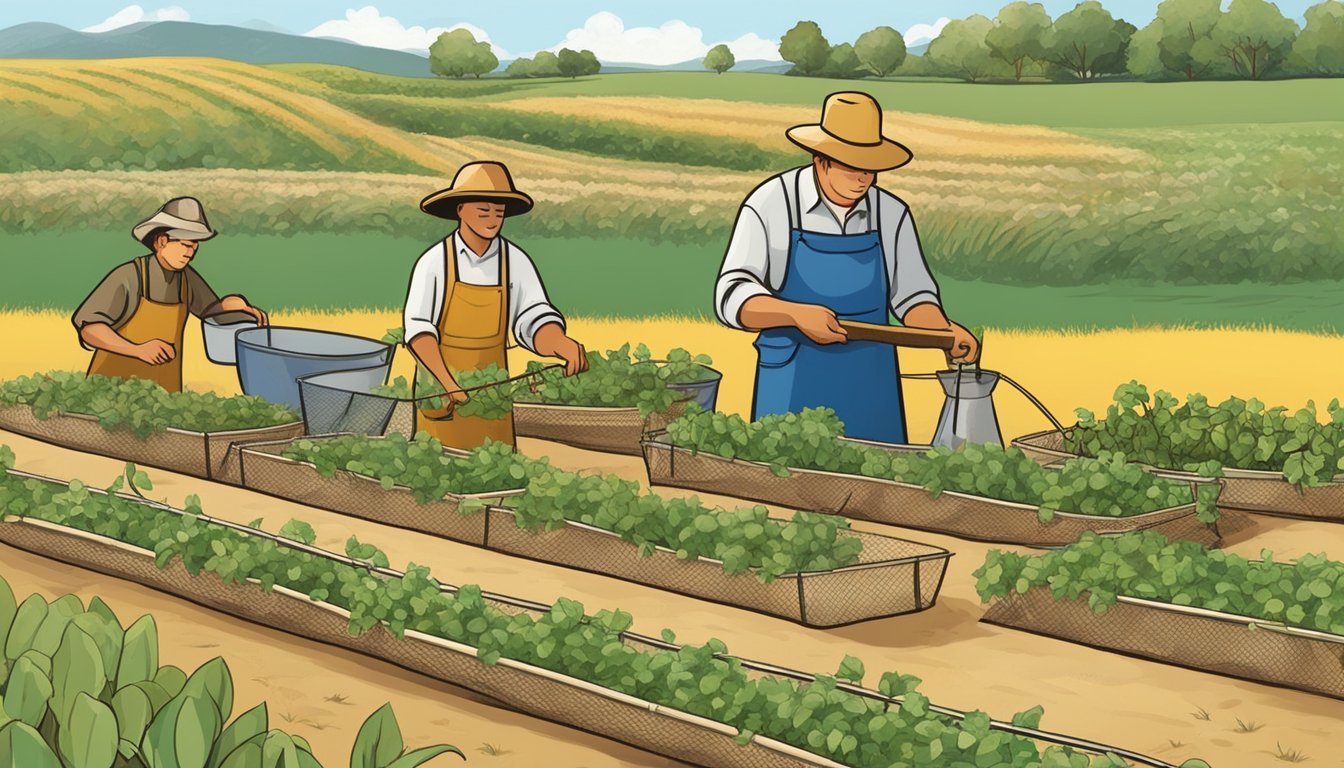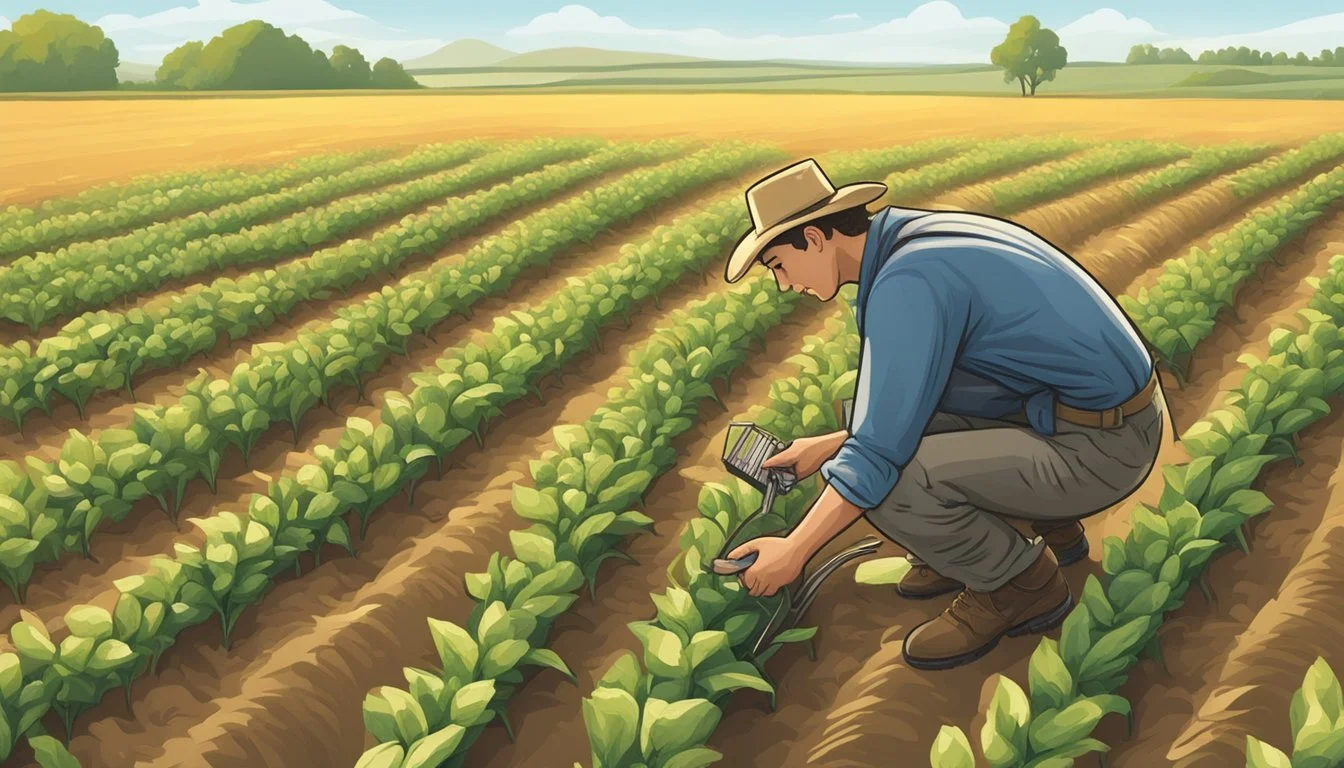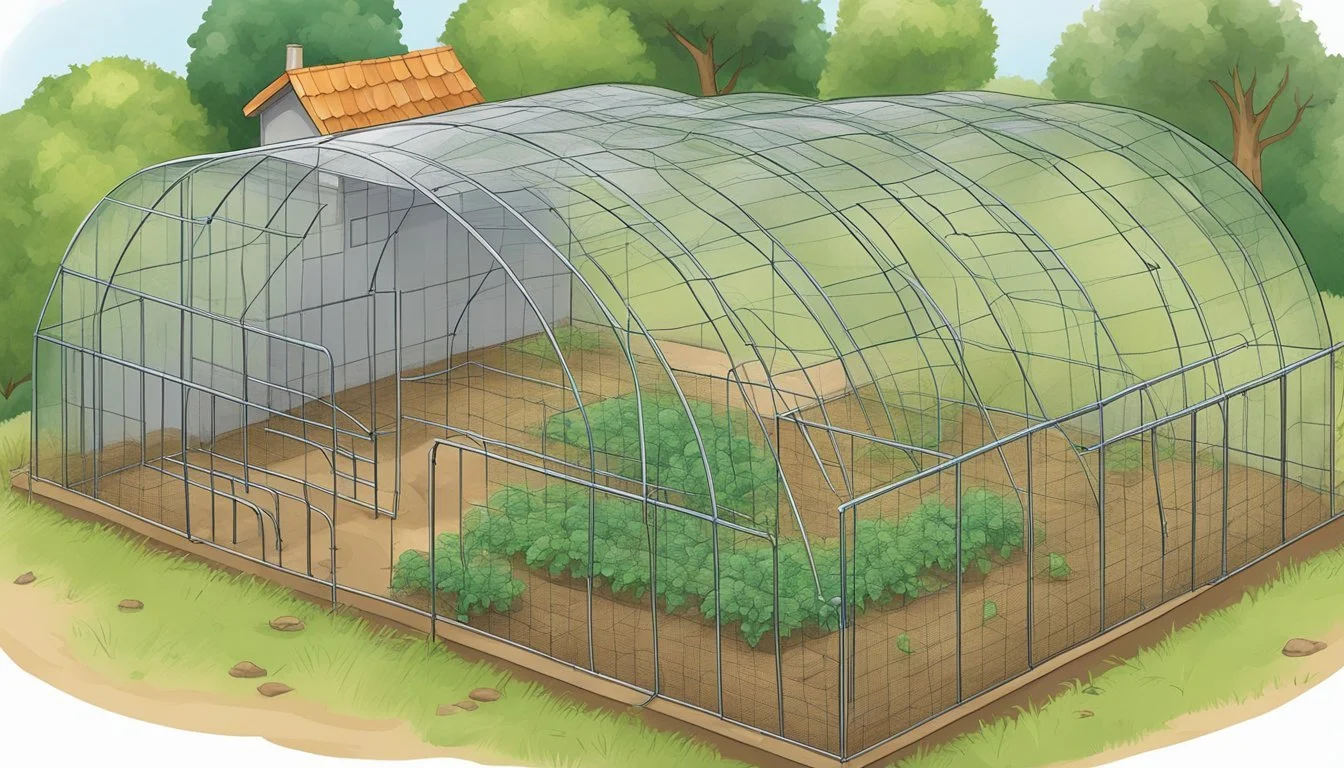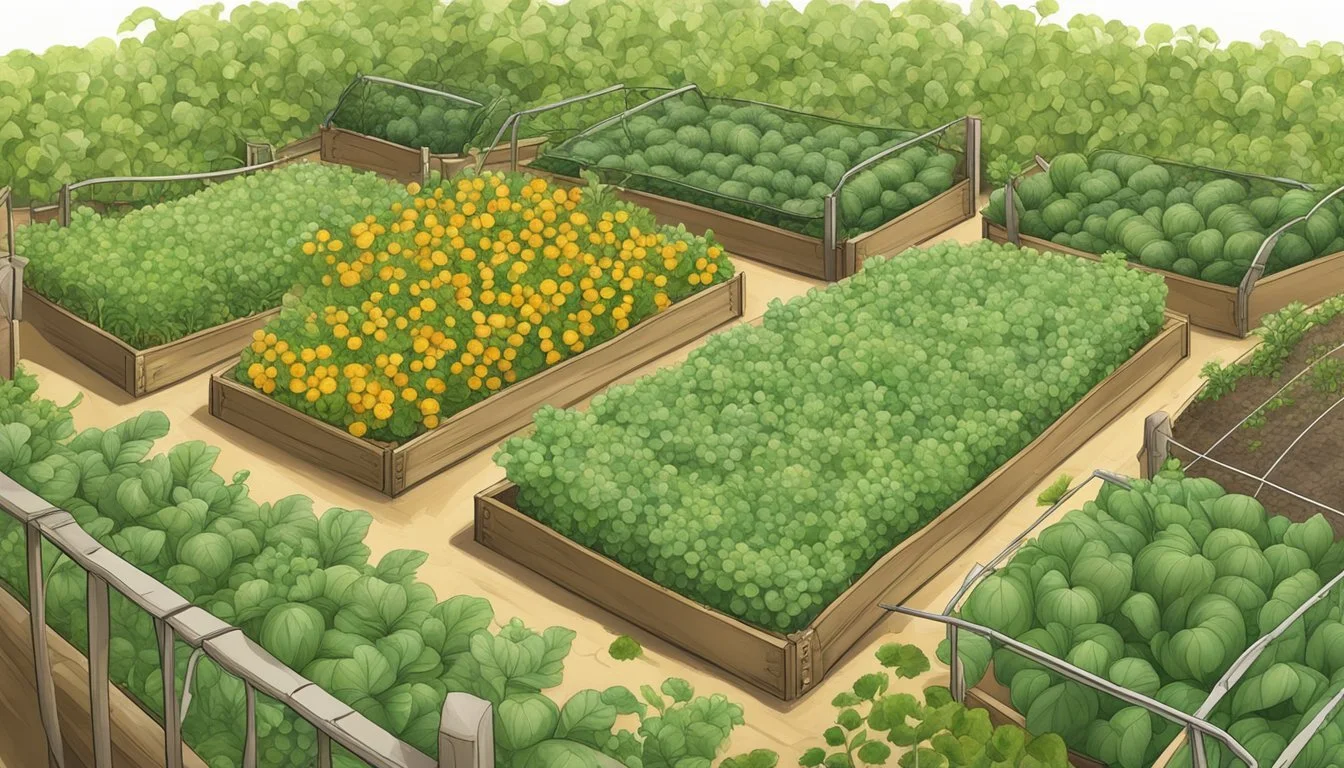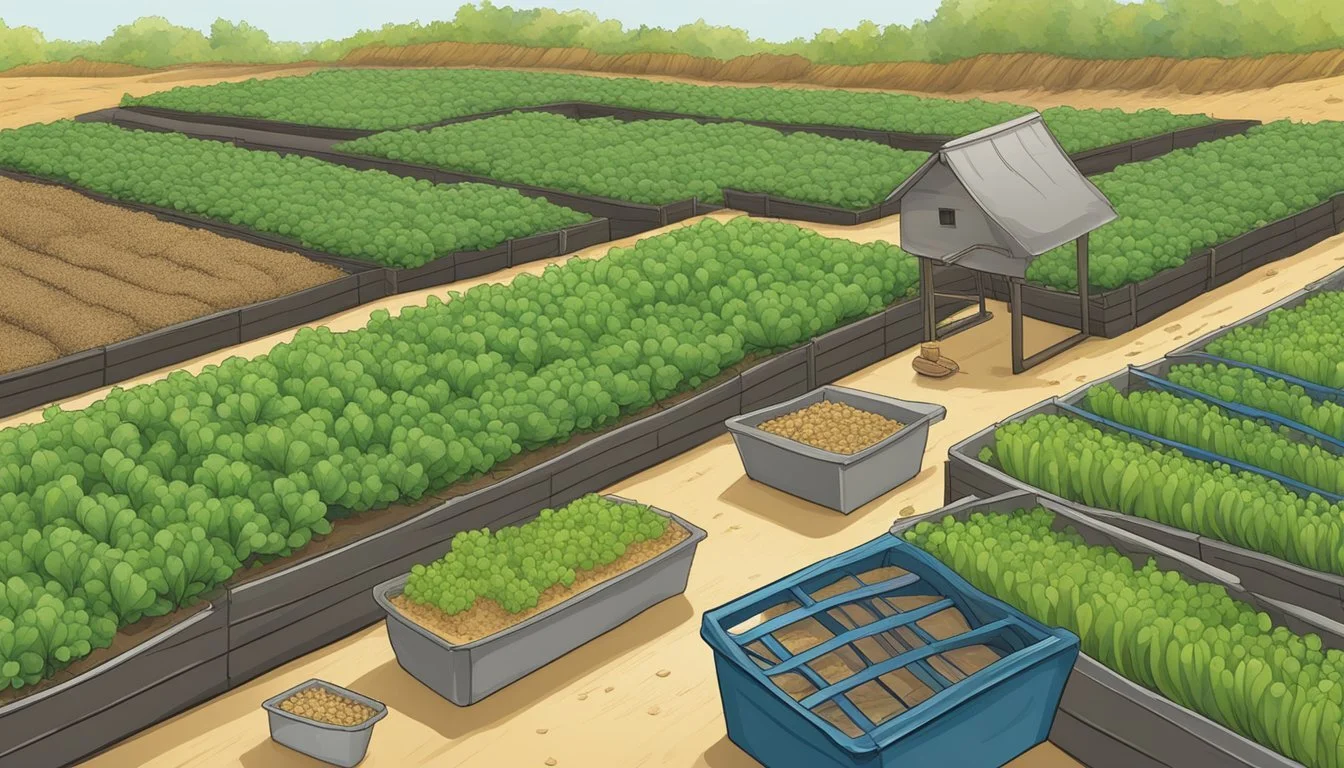Protecting Crops from House Mouse
Effective Strategies for Farmers
Protecting crops from the common house mouse, Mus musculus, is a significant concern for homeowners and gardeners alike. These small rodents can cause extensive damage by gnawing on plants and seeds, which can result in decreased yields and compromised garden health. Effective strategies to deter and manage these pests are essential to maintain the integrity and productivity of a garden or homestead.
Physical barriers such as hardware cloth or wire mesh can be instrumental in keeping mice away from plants. Sealing any gaps and employing the use of mouse-proof cabinets or containers for storage of paper goods and seeds is another proactive approach. Additionally, cultivating plants with strong odors like mint or lavender, or utilizing substances like blood meal in the soil, can act as natural deterrents due to the aversion mice have to these scents.
Apart from these methods, employing natural predators in the garden ecosystem and using non-toxic repellents can contribute to a holistic mouse control strategy. For instance, some gardeners find that peppermint oil can be an effective mouse repellent when applied to areas of potential mouse traffic. It is important, however, to regularly reassess and adapt pest control methods as house mice are known for their adaptability and tenacity.
Understanding the House Mouse
To mitigate the adverse effects house mice have on crops, a solid comprehension of their biology, behavior, and dynamics within ecosystems is crucial.
Biology and Behavior
The house mouse (Mus musculus) is a small, adaptable rodent. Physiologically equipped to live and thrive in close proximity to humans, these pests possess traits like agility and a high reproductive rate which aid in their survival in various environments. Behaviorally, they exhibit a proclivity for nocturnal activity and possess a remarkable ability to squeeze through extremely small spaces, which facilitates their intrusion into agricultural areas.
Damage and Impact on Crops
House mice cause significant mouse damage to crops through consumption and contamination. They represent a challenge in both urban and rural settings, impacting food storage and production. Damage is not restricted to loss of yield; it also encompasses the spread of diseases like salmonella, posing a threat to human and animal health. Their tendency to gnaw on various materials can lead to structural damage, adding to the economic strain on farming operations.
Mouse Population Dynamics
Understanding mouse population dynamics is essential for effective control measures. Infestations can swell rapidly under favorable conditions due to their rapid breeding cycle; a single pair can produce a large progeny within months. Environmental factors, including the availability of food and shelter, significantly influence their population levels. Consequently, agricultural landscapes experiencing a bountiful season may see spikes in house mouse populations, necessitating more rigorous control interventions.
Preventive Measures
Preventative measures are essential in protecting crops from house mice, focusing on cultural practices, farm-management, and habitat modification to create an environment less conducive to mouse populations.
Cultural Practices
Cultural practices involve altering the way farmers manage their fields and crops to deter mice. For instance, maintaining clean fields with minimal debris can reduce the likelihood of mice taking up residence. After harvest, promptly removing excess vegetation and grain spillage ensures there is less food available for mice, making the area less attractive. Regular tilling of soil can also disrupt mouse habitats and reduce the likelihood of infestation.
Farm-Management Practices
Effective farm-management practices play a crucial role in controlling house mouse populations. Storing seed and feed in rodent-proof containers prevents access and potential contamination. Timely sowing of crops can also be strategic; for example, planting wheat and corn after peak mouse breeding seasons in spring and fall can reduce damage to seedlings. Sanitation measures like managing garbage efficiently and using secure composting methods are vital to dissuade house mouse habitation near crops.
Habitat Modification
Habitat modification involves changing the farm environment to make it less appealing to mice. Removing potential nesting sites by keeping grass short and eliminating piles of lumber or stone can be effective. In winter, rodents seek shelter, so securing buildings and storage areas becomes even more crucial. Creating buffer areas devoid of trees and tall vegetation around crop fields can act as a barrier to mice migration from wild habitats.
Each of these methods involves an understanding of house mouse behavior and habitat use. Farmers and land managers incorporate these into a comprehensive pest management strategy aimed at conservation of crops and prevention of mouse-related damage.
Physical Barriers and Repellents
Effective management of house mice in agricultural settings often hinges on the strategic use of physical barriers and repellents. This approach limits access to crops and uses certain smells or substances that mice tend to avoid.
Hardware Cloth and Fencing
Hardware cloth is a formidable material that gardeners can utilize to create a barrier against house mice. The mesh size of hardware cloth should be no larger than a quarter-inch to effectively prevent mice from passing through. A robust fencing structure around the base of plants or garden beds provides a physical obstacle that deters these pests from reaching the crops.
Natural Repellents
Certain plants like mint, lavender, and garlic serve as natural repellents, due to their strong scents that mice generally find unpleasant. Embedding these plants that repel mice around the perimeter of a garden can contribute to a decrease in rodent activity. Additionally, homeowners and gardeners might consider scattering dried mints and lavender near vulnerable areas as a more concentrated source of these deterrent smells.
Commercial Repellents
Commercial repellents offer another layer of defense against house mice. These products often contain concentrated versions of the same strong scents found in natural repellents, such as mint and garlic, making them easy to deploy around crops. It is crucial to follow the manufacturer's instructions when using repellents to ensure both effectiveness and safety.
Rodent Trapping Methods
In the battle against crop damage by house mice, various trapping methods are deployed to manage these pests effectively. Each method offers unique advantages and caters to different circumstances within agricultural settings.
Snap Traps
Snap traps are a widely recognized solution for mouse control. These traps utilize a spring-loaded bar that swiftly closes upon the mouse, typically resulting in an immediate kill. The benefit of snap traps is that they can be used multiple times and offer a clear indication of a successful capture. However, their placement needs to be strategic and away from non-target animals to avoid unintended injuries.
Pros:
Cost-effective
Reusable
Visible results
Cons:
Possibility of harming non-target species
Require regular inspection
Live Traps
For those seeking a more humane approach, live traps are designed to catch and hold mice without causing them harm. These enclosures provide a means to capture the animal alive and relocate it. While this method is seen as more ethical, it demands more time and effort in terms of trap checking and mouse transportation.
Pros:
Humane to the rodent
Allows for relocation of mice
Cons:
More labor-intensive
Risk of mice returning if not relocated far enough
Bait Stations
Bait stations offer a strategic approach, where baits are placed inside a protective enclosure. The design of these bait stations ensures that only mice can enter, minimizing risks to other wildlife and domestic animals. Bait stations can be advantageous as they also protect bait from the elements, preserving its efficacy.
Pros:
Targeted approach
Protects non-target animals
Shields bait from weather
Cons:
Requires ongoing bait replenishment
Must ensure station remains tamper-proof
The choice of trapping method depends greatly on the specific agricultural context, ethical considerations, and desired outcomes in terms of mouse control and crop protection.
Chemical Control
Effective chemical control of house mice centers around the artful application of rodenticides and strategic baiting methods. Understanding the active ingredients and deployment techniques is crucial for both efficacy and safety concerns.
Rodenticides
Rodenticides are the poisonous compounds used to control mouse populations. They fall into different categories, with anticoagulants like bromadiolone and brodifacoum being the most common. These substances work by preventing blood from clotting, leading to internal bleeding. Another potent rodenticide is zinc phosphide, which releases phosphine gas in the mouse's stomach after ingestion, causing cell death.
Anticoagulant Rodenticides: They generally require several feedings to be lethal. Anticoagulants are relatively slow-acting but highly effective.
Examples include:
Bromadiolone
Brodifacoum
Zinc Phosphide: This is a fast-acting poison that is especially useful in acute infestations.
Method of action: Phosphine gas release upon ingestion
Careful handling and placement of these poisons are essential to minimize risks to non-target animals and humans.
Baiting Strategies
Baiting combines rodenticides with attractive food to entice house mice. Key to successful baiting is the choice of bait—peanut butter, cotton balls, nuts, and fresh fruit are effective lures. Bait stations should be strategically placed near known mouse activity areas and checked regularly.
Bait Choices:
High-Protein: Peanut butter, nuts
Fresh Options: Cotton balls soaked in attractive scents, fresh fruit pieces
Placement Tactics:
Locate near mouse tracks or nests
Secure bait stations to avoid displacement by larger animals
By using carefully selected poisons and baits, one can efficiently control the population of house mice and protect crops from infestation.
Biological Control Strategies
Biological control strategies offer an environmentally friendly means to reduce the damage caused by house mice in agricultural settings. These strategies complement traditional pest management methods and can lead to long-term pest control.
Predators
Natural predators play an essential role in managing house mouse populations. Cats, including both domesticated and feral cats, are effective predators that can lower the number of mice in a given area through predation. Their presence on a farm can deter mice through the biology of predator-prey relationships. It's important to note that the introduction of cats must be managed to prevent potential harm to the ecosystem and the cats themselves.
Biological Repellents
Biological repellents leverage the natural aversions that house mice have towards specific biological materials. These can include predators' scents or plant-based substances that are repulsive to rodents. Although not a direct form of predation, biological repellents work by exploiting the inherent biology of house mice, causing them to avoid treated areas. This deterrent effect can be heightened with repeated applications or by combining repellents with other control methods.
Monitoring and Management
Effective monitoring and management strategies are vital to protect crops from house mouse infestations. The following subsections delve into specific techniques used for environmental monitoring and population management to control these rodent pests.
Environmental Monitoring
Regular surveillance of mouse population abundance in crop areas enables early detection of potential infestations. Scientists employ a variety of methods for tracking house mouse populations, including trap-based surveys at benchmark sites. These data are critical for running forecast models to predict population spikes, which helps farmers preemptively mitigate the risks of a mouse plague.
Effective environmental monitoring methods include:
Live-trapping: Assessing mouse abundance.
Remote camera traps: Non-intrusive surveillance.
Tracking tunnels: Indicating mouse presence via footprints.
Population Management
Upon identifying signs of mice in the garden or agricultural landscape, population management measures must be promptly enacted to avoid crop damage. The goal is to maintain mouse populations below threshold levels that could lead to significant economic loss. This may involve habitat modification to remove shelter and food sources, use of rodenticides with caution to avoid non-target species harm, and even the introduction of natural predators.
Population management strategies comprise:
Habitat alteration: Minimizing conducive surroundings for mouse harborage.
Rodenticides: Chemical control measures.
Biological control: Encouraging predators like barn owls.
Health and Safety Considerations
When protecting crops from house mice, it's essential to consider both health risks and safety practices. House mice can spread diseases through their urine and droppings, and chemical control methods require careful handling.
Diseases and Contamination
House mice are potential carriers of health risks due to the contamination they can spread through urine and droppings. These vermin are capable of transmitting harmful pathogens that can lead to serious health concerns for humans. It is crucial to monitor for indications of gnawing and contamination in food storage and preparation areas to prevent the spread of diseases.
Hantavirus: Spread via urine and droppings, causing flu-like symptoms.
Salmonellosis: Resulting from the consumption of contaminated food.
Leptospirosis: Transmitted through urine, potentially leading to kidney damage.
The safe elimination of infested materials and disinfection of affected areas is mandatory to reduce the risk of disease transmission.
Handling and Storage of Chemicals
Effective handling and storage of chemicals used in baiting strategies are critical to ensure safety for humans and non-target species. It is important to use poisons and other control agents in accordance with the manufacturer's instructions to prevent accidental exposure.
Chemical Baits:
Always store poisons and bait in labeled, secure containers.
Restrict access to baiting areas to prevent accidental ingestion by children or pets.
Employ protective equipment, such as gloves and masks, when handling poisons.
Precautions must be taken to ensure that baiting solutions do not contaminate water sources or crops. Proper handling and discretion must be exercised when placing baits, especially in areas frequented by wildlife or domestic animals.
Legislation and Community Actions
Protecting crops from house mice is a challenge that requires strategic responses at both legislative and community levels. Effective legislation can serve to mandate control measures and provide resources, while community-driven initiatives can maximize local engagement and responsiveness to the threat.
Local and National Legislation
In countries like Australia and New Zealand, governments have recognized the need for robust legislation aimed at protecting the food supply and supporting conservation efforts. For instance, in Australia, the invasive species management, including that of the house mouse (Mus musculus), is often addressed under biosecurity laws. These laws empower authorities to take action to prevent potential damage to agriculture and the environment.
Biosecurity Act 2015 (Australia): A framework to manage biosecurity risks, including invasive species, to the economy, environment, and public health.
Conservation Act 1987 (New Zealand): Provides for the management of New Zealand's natural and historic resources, and includes provisions for the control of pests.
Community-Based Initiatives
Community initiatives often supplement legislative efforts. They typically involve:
Local education programs: Informing community members about the impact of house mice on the food security and conservation.
Participation in pest control: Community groups partake in mouse trapping and monitoring efforts to support the conservation of local ecosystems and protect the food supply.
Supporting research: Some communities actively participate in studies that aim to develop more effective mouse control methods.
In New Zealand, community-based conservation projects often focus on protecting native species by controlling invasive predators, including house mice, thus safeguarding biodiversity as well as food resources.
Case Studies and Research
Research underscores the cyclic occurrence of house mouse outbreaks in agricultural settings, primarily in regions such as Australia and New Zealand. These events impact crop yields significantly, prompting a call for deeper understanding and management responses.
Historical Outbreaks
In Australia, large-scale outbreaks of house mouse populations occur roughly once every four years, leading to major yield losses in cereal crops. These episodes have been documented extensively, with data showing that even low to moderate densities of mice can still cause damage to crops. Studies by authors such as Steve Henry have contributed to the body of work focusing on the patterns and effects of these outbreaks.
Recent Studies
Recent research has focused on the effects of conservation agriculture practices, which have seen a reduction in the disturbance of mouse habitats due to the adoption of zero-tillage methods and altered crop rotations. Capelli et al. provide insights into how these agronomic changes in Australia may have affected mouse population dynamics. In another vein, Witmer and colleagues from Washington have contributed to understanding the broader ecological impacts of rodent pests and their management in agricultural landscapes.
Economic Impact
The economic repercussions of house mouse infestations in agricultural settings are significant, directly causing substantial crop damage and indirectly influencing food security.
Agricultural Costs
House mice (Mus domesticus) can inflict severe economic damage to grain crops during peak population seasons. The costs associated with controlling these rodents and repairing the damage they cause add up quickly for farmers. In southeastern Australia, the impact of house mice on crops has been highlighted, with cases requiring increased expenditure on pest control measures and, at times, replanting of crops due to the extent of the mouse damage. The financial burden is not just limited to the loss of yield but also encompasses the additional costs for pesticides and labor to manage the infestation.
Effect on Food Supply
The presence of house mice in agricultural systems poses a direct threat to food security by diminishing the food supply. During plagues, which are periods when mouse populations exponentially increase, the extent of crop damage can be substantial, leading to noticeable deficits in grain harvests. These deficits, caused by mice consuming and damaging the seeds and young seedlings, can lead to shortages in the availability of grain for both direct human consumption and as feed for livestock, which indirectly affects the larger food supply chain.
Future Outlook
The trajectory of crop protection against house mice is promising, with significant advancements in control methods and the incorporation of sustainable farming practices.
Advancements in Control Methods
Researchers have developed innovative strategies to reduce crop damage. For instance, a technique known as "chemical camouflage" has been tested, proving effective in concealing crops from mice, resulting in a noteworthy decrease in damage.
Sustainable Farming Practices
The emphasis on sustainability is leading to a rise in eco-friendly practices. An example is the emerging trend of irrigated farming systems which are designed to not only maximize water usage efficiency but also to establish less inviting environments for pests, thereby reducing the likelihood of infestation and protecting crops without heavy reliance on chemical interventions.
Frequently Asked Questions
In this section, we address common concerns about how to protect crops from house mice, exploring diverse strategies ranging from preventive measures to professional pest control solutions.
What preventative measures can farmers implement to deter mice from crop areas?
Farmers can deter mice by maintaining a clean and tidy farm environment, disposing of harvest debris, and utilizing crop rotation to prevent the establishment of mouse populations. Eliminating potential nesting areas, such as piles of wood or unused equipment, can also be effective.
How can one employ home remedies to keep mice away from agricultural land?
Certain natural deterrents such as peppermint oil and eucalyptus oil can be used to repel mice. Farmers can apply these oils around the perimeter of crop areas or soak cotton balls and place them around the farm, especially near entry points.
What effective mouse control products are available for agricultural purposes?
For agricultural settings, bait stations with rodenticides are commonly used for mouse control. These products should be employed with caution to avoid impacting non-target species. Physical traps are also an effective control method for smaller mouse populations.
What is the impact of small rodents on agricultural ground cover, and how can this be mitigated?
House mice can cause considerable damage to ground cover by eating seeds and young shoots, which can lead to soil erosion. To mitigate this, farmers can use targeted trapping and maintain a diverse ecosystem that encourages the presence of natural mouse predators.
What are the most cost-effective strategies for achieving long-term mouse control on farms?
Implementing habitat management strategies like controlling vegetation and reducing harborage are cost-effective for long-term control. Establishing a regular monitoring system to detect early signs of mice can prevent larger, more costly infestations.
Which professional pest control options are considered the best for mitigating mouse infestations in agricultural settings?
Professional pest control options include comprehensive services that can assess the extent of an infestation, implement integrated pest management strategies, and provide ongoing monitoring and support to ensure that mouse populations are managed effectively.

